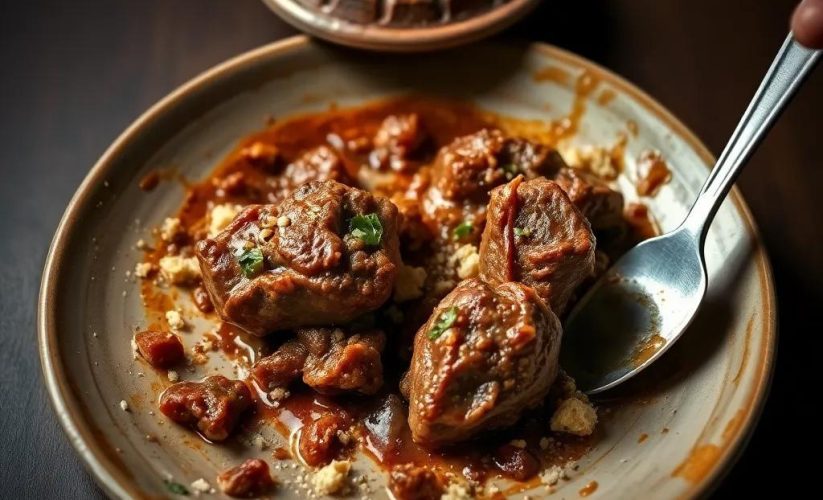Unlock the Secrets of Classic Spanakopita: Easy, Authentic Greek Pie Recipe
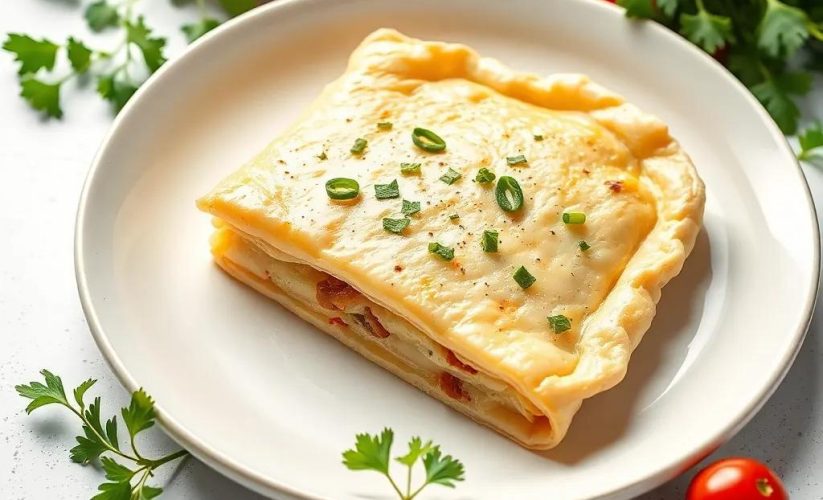
Unlock the Secrets of Classic Spanakopita: Easy, Authentic Greek Pie Recipe
🌍 Cuisine: Greek
⚙️ Difficulty: Medium
Ingredients
Nutrition Facts
320
Instructions
- Preheat your oven to 350°F (175°C) and lightly grease a 9×13-inch baking dish with olive oil.
- In a large skillet, heat 2 tablespoons of olive oil over medium heat. Add the chopped onion and sauté until translucent, about 5 minutes.
- Add the chopped spinach to the skillet and cook until wilted and most of the moisture has evaporated, about 5-7 minutes. Remove from heat and let cool.
- In a large mixing bowl, combine the crumbled feta, ricotta cheese, beaten eggs, chopped dill, chopped parsley, and cooled spinach/onion mixture. Mix thoroughly and season with salt and pepper to taste.
- Lay one sheet of phyllo dough in the prepared baking dish and brush lightly with olive oil. Repeat this layering and brushing process with 5 more sheets, working quickly to prevent drying out.
- Spread the spinach and cheese filling evenly over the layered phyllo sheets.
- Layer the remaining 4 sheets of phyllo on top of the filling, brushing each sheet with olive oil as before.
- Using a sharp knife, gently score the top layers of phyllo into squares or diamonds to make slicing easier after baking.
- Bake in the preheated oven for 40-45 minutes, or until the phyllo is golden brown and crisp.
- Remove from the oven and let the spanakopita cool for about 10 minutes before serving to set.
- Cut along the scored lines and serve warm or at room temperature.
- Store leftovers covered in the refrigerator for up to 3 days and reheat gently before eating.
Serving Suggestions
- Serve spanakopita with a side Greek salad featuring tomatoes, cucumbers, olives, and red onion.
- Pair with tzatziki sauce or a dollop of plain Greek yogurt for added creaminess.
- Accompany your meal with freshly baked pita bread and hummus.
- Enjoy spanakopita as a delicious appetizer or a light main dish alongside lemon roasted potatoes.
- Complement the flavors with a glass of chilled white wine, such as Assyrtiko or Sauvignon Blanc.
- Top with a squeeze of fresh lemon juice for bright, zesty flavor.
- Add a side of marinated olives and grilled vegetables for an authentic Mediterranean experience.
Table of Contents

Intro
Spanakopita is more than just a spinach pie—it’s a celebration of simple, fresh ingredients transformed into a flaky, golden masterpiece that delights every sense. This classic Greek dish invites you to experience the perfect harmony of crispy phyllo layers with a creamy, herb-infused filling, making it a standout whether served as a hearty appetizer or a satisfying main course. What makes this recipe truly special is how approachable it is: with straightforward steps and accessible ingredients, even those new to Mediterranean cooking can create an authentic taste of Greece right at home.
Ideal for sharing at family dinners, casual gatherings, or festive occasions, spanakopita effortlessly brings warmth and comfort to the table. Its versatility means it shines equally warmed fresh from the oven or enjoyed at room temperature, perfect for picnics or potlucks. Unlocking the secrets of this beloved dish opens doors to endless culinary possibilities—pair it with a crisp salad, a dollop of tangy tzatziki, or a glass of bright white wine to complete the experience. Whether you’re craving a taste of tradition or looking to impress with a homemade Mediterranean classic, this recipe is a delightful journey into Greek flavors that anyone can master.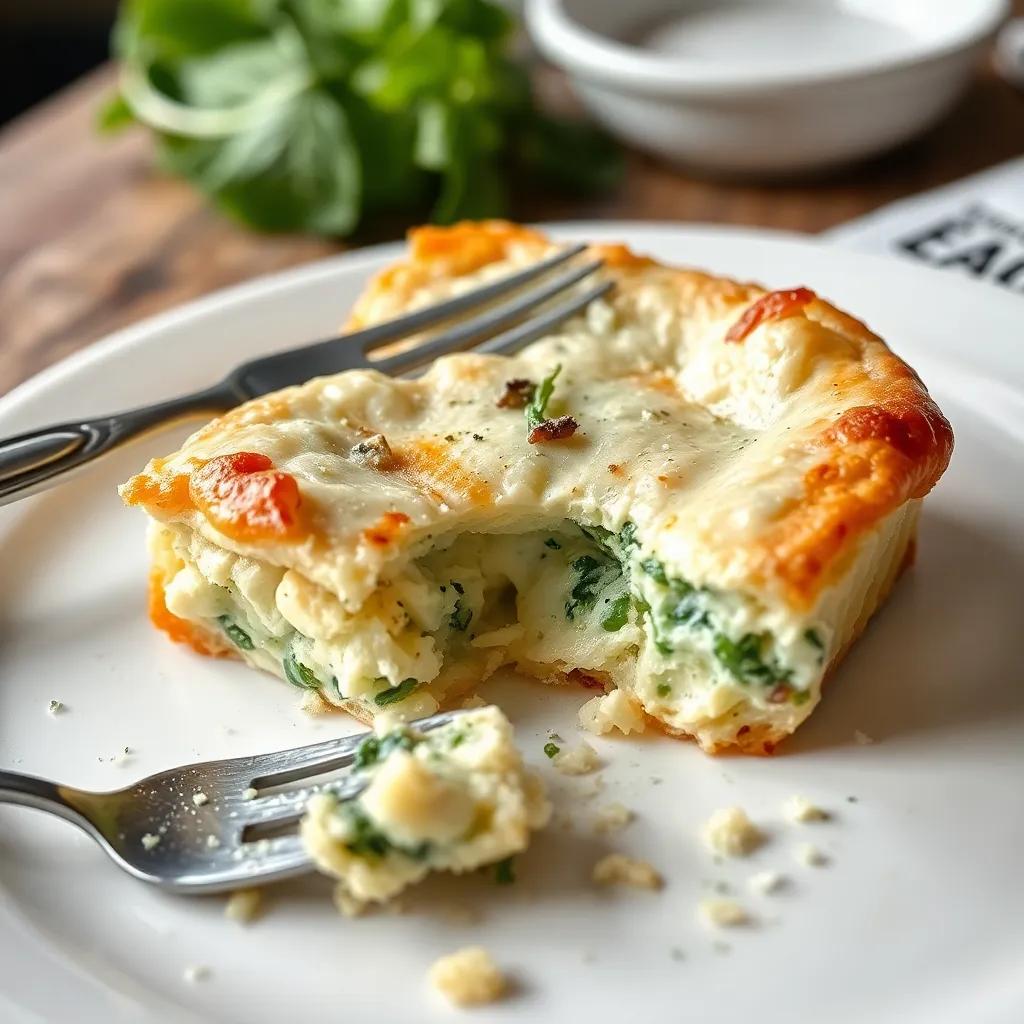
Ingredient Notes
When crafting an authentic spanakopita, a few key ingredients truly define the dish’s character and flavor. Understanding their roles will help you choose the best versions and make thoughtful substitutions if needed.
Fresh Spinach: The foundation of the filling, fresh spinach provides both vibrant color and that signature earthy flavor. For the best results, opt for young, tender leaves rather than mature ones, which can be tougher and more bitter. Be sure to wash thoroughly and sauté or wilt the spinach well to remove excess moisture—this step prevents soggy phyllo and ensures a crisp pie. If fresh spinach isn’t available, you can use frozen spinach; just make sure to thaw and squeeze out as much liquid as possible to keep the filling from becoming watery.
Feta Cheese: No spanakopita is complete without feta, the briny crumbly cheese that adds tang and richness. Greek feta made from sheep’s or a blend of sheep and goat’s milk offers the most authentic flavor—look for blocks labeled “PDO” (Protected Designation of Origin) for quality assurance. Avoid overly salty, crumbly supermarket feta and instead give it a quick rinse or soak if it tastes too sharp. If you can’t find true feta, a tangy, crumbly goat cheese or a good quality ricotta salata can be a suitable stand-in, but expect a slightly milder profile.
Phyllo Dough: The magical, paper-thin sheets that create spanakopita’s famously flaky crust. Because phyllo dries out quickly, it’s important to work briskly and keep unused sheets covered with plastic wrap or a clean damp towel. When buying phyllo, look for fresh or well-frozen varieties without added preservatives or excessive bleach. If you’re short on time, frozen phyllo from reputable brands is a great alternative—but thaw it completely in the fridge to prevent tearing. For a gluten-free twist, you’ll need a substitute pastry, but note that achieving spanakopita’s delicate crispness without phyllo can be challenging.
Fresh Herbs—Dill and Parsley: These green jewels elevate the filling with brightness and subtle complexity. Fresh dill stands out as a classic flavor in spanakopita, imparting a slightly sweet, anise-like note, while parsley provides freshness and balance. When possible, choose vibrant, fragrant herbs over dried—dried dill can be used if fresh isn’t accessible, but use sparingly as its flavor is more concentrated. For experimentation, chives or fresh mint can add a creative twist, but the traditional herb combo remains beloved for a reason.
By paying attention to these ingredients’ nuances, you’ll ensure your spanakopita not only tastes authentic but also captures the essence of Greek home cooking at its best.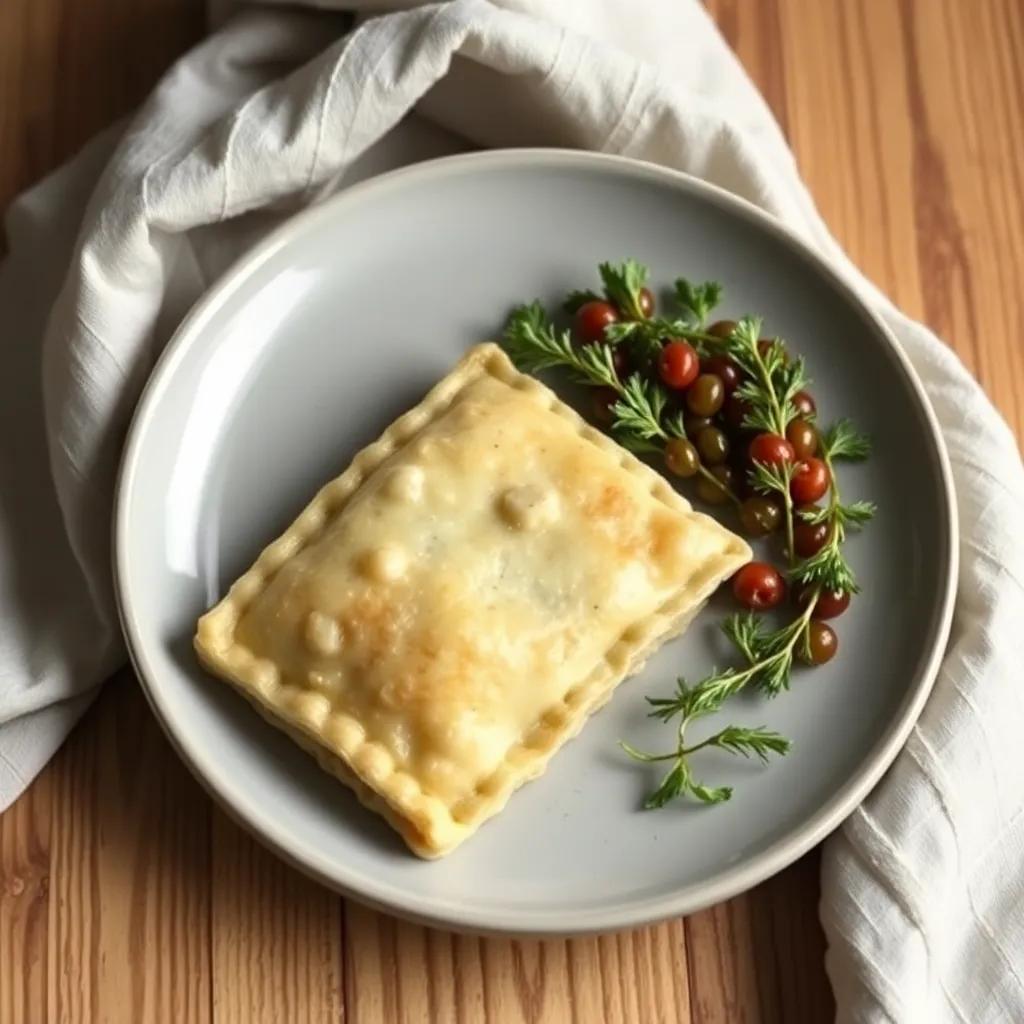
Tips & Variations
Mastering spanakopita means understanding a few insider tips that elevate this classic from good to unforgettable, as well as embracing variations that make the recipe truly your own.
• Keep Phyllo Flexible and Flaky: The key to that iconic crispy crust lies in working with phyllo dough without letting it dry out. Always cover sheets with a damp towel or plastic wrap while layering. If your kitchen is warm and dry, consider lightly misting the towel to maintain moisture. Brushing each phyllo layer generously with olive oil—not butter—helps achieve a delicate, golden finish with traditional Mediterranean flavor.
• Drain Your Filling Well: Spinach naturally sheds moisture as it cooks. After sautéing, be sure to press out excess liquid with a clean kitchen towel or fine mesh strainer. This avoids a soggy pie and keeps the phyllo crisp. The same goes for any additional wet vegetables or greens you might add.
• Customize the Herb Blend: Dill and parsley are the classic duo, but don’t hesitate to experiment. Fresh mint can add a surprising brightness, oregano offers earthiness, and chives lend a mild onion note. For a heartier scent, toss in a pinch of dried savory or thyme, but don’t overpower the delicate balance.
• Cheese Variations: If you want a creamier texture, try mixing in a bit more ricotta or even cream cheese, which softens the filling. For a saltier tang, Greek kefalotyri or halloumi (crumbled finely) can replace or complement feta. Vegans can skip cheese entirely and substitute with crumbled firm tofu seasoned with nutritional yeast, lemon, and garlic to mimic the flavor profile.
• Dietary Swaps:
– Gluten-Free: Phyllo is notoriously difficult to substitute without losing texture, but you can try layering thin slices of zucchini or eggplant brushed with oil as a creative crust alternative. Alternatively, seek out gluten-free phyllo brands or make a savory gluten-free pastry crust to hold the filling.
– Vegan: Omit the eggs and cheeses, replacing ricotta and feta with blended silken tofu and a splash of lemon juice for tang. Add a tablespoon of chickpea flour or ground flaxseed mixed with water to bind the filling. Season generously to offset the lack of cheese’s saltiness.
– Lower Sodium: Rinse the feta or reduce amount used, then boost herbs and lemon zest to compensate. Use low-sodium or no-salt-added alternatives wherever possible.
• Add Mix-Ins for Extra Texture and Flavor: Traditional spanakopita is simple, but you can fold in sautéed leeks, scallions, chopped artichoke hearts, or even toasted pine nuts for an added crunch and depth. For a meatier pie, diced cooked lamb or ground beef can be incorporated into the filling for a twist on the classic.
• Shape and Serve Differently: Instead of a large casserole-style pie, try folding the filling into individual triangles or bite-sized parcels for easy snacking and classy presentation. These hand pies are excellent for appetizers or party platters.
With these tips and variations, you can make the recipe your own while preserving the authentic spirit of spanakopita. Whether you stick strictly to tradition or let your creativity wander, this Greek treasure welcomes every fresh idea with open arms—and flaky, golden layers.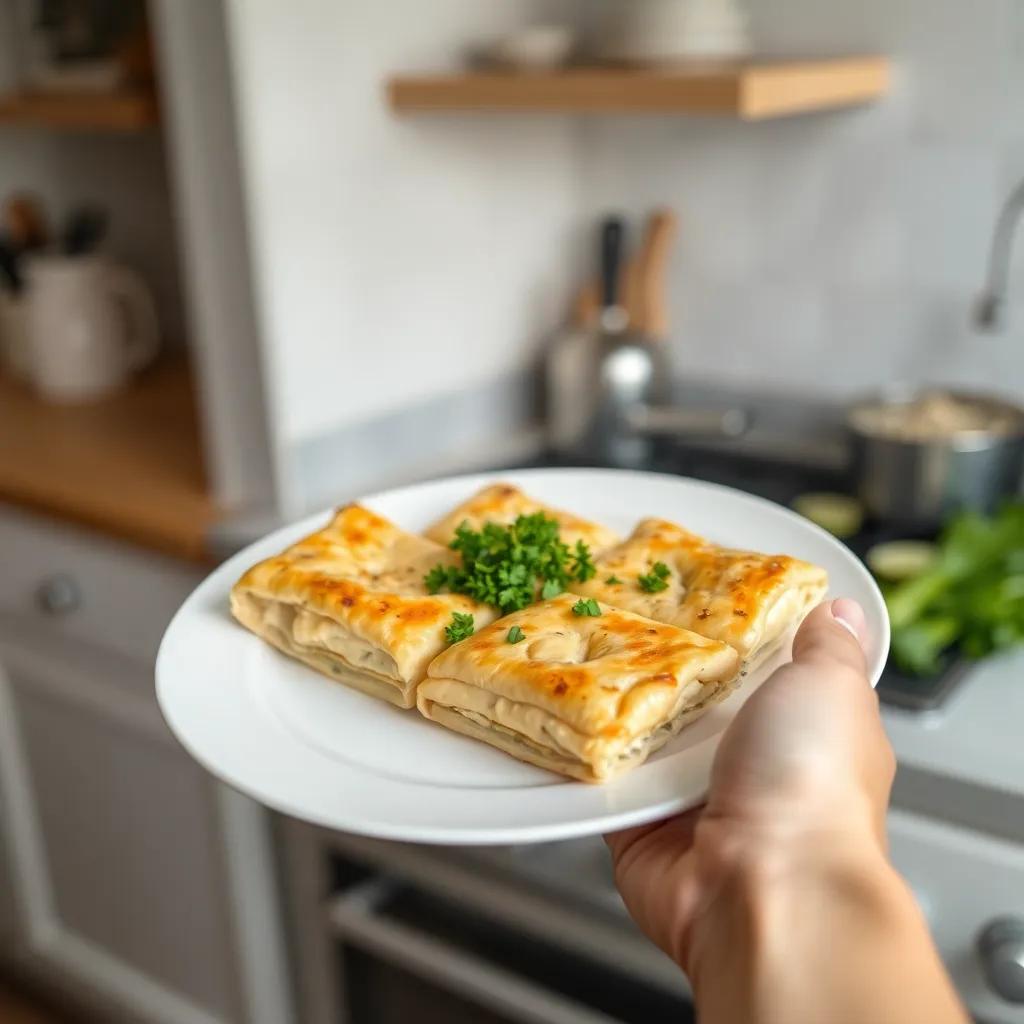
Leftovers & Storage
After enjoying your warm, flaky slice of spanakopita, you may find yourself with leftovers that are just as tempting the next day. Proper storage is key to preserving that signature crispness and vibrant filling so you can savor the pie’s rich flavors anytime.
To store leftover spanakopita, allow it to cool completely at room temperature—this helps prevent condensation that can make the phyllo soggy. Once cooled, transfer the portions into an airtight container or tightly wrap the whole pie using plastic wrap and then aluminum foil. Keeping air out is essential to maintain the delicate texture of the phyllo and to lock in freshness.
In the refrigerator, stored spanakopita will stay fresh and delicious for up to 3 days. When ready to enjoy, reheat gently in a preheated oven at 325°F (160°C) for about 10–15 minutes. This low-and-slow reheating method revives the crisp layers without drying out the filling. Avoid microwaving if possible, as it tends to soften the pastry too much and can make the pie chewy or soggy.
For longer storage, spanakopita freezes beautifully and can be a lifesaver for meal prepping or future gatherings. Wrap the cooled pie securely in plastic wrap, then in a layer of foil, and place it inside a freezer-safe container or heavy-duty bag. It will keep its quality in the freezer for up to 2 months. To thaw, move the wrapped pie to the refrigerator overnight and then reheat in the oven using the same gentle method described above.
If you prefer freezing in individual portions, cut the pie into slices first and wrap each piece separately. This approach makes it easy to defrost and reheat just what you need, reducing waste and simplifying meal planning.
Whether packed for lunch, prepped ahead for a busy week, or saved as a comforting snack, following these storage tips ensures your classic spanakopita stays just as delightful as the moment it came out of the oven. A little care here means you can enjoy this flaky Greek treasure again and again—no matter the occasion.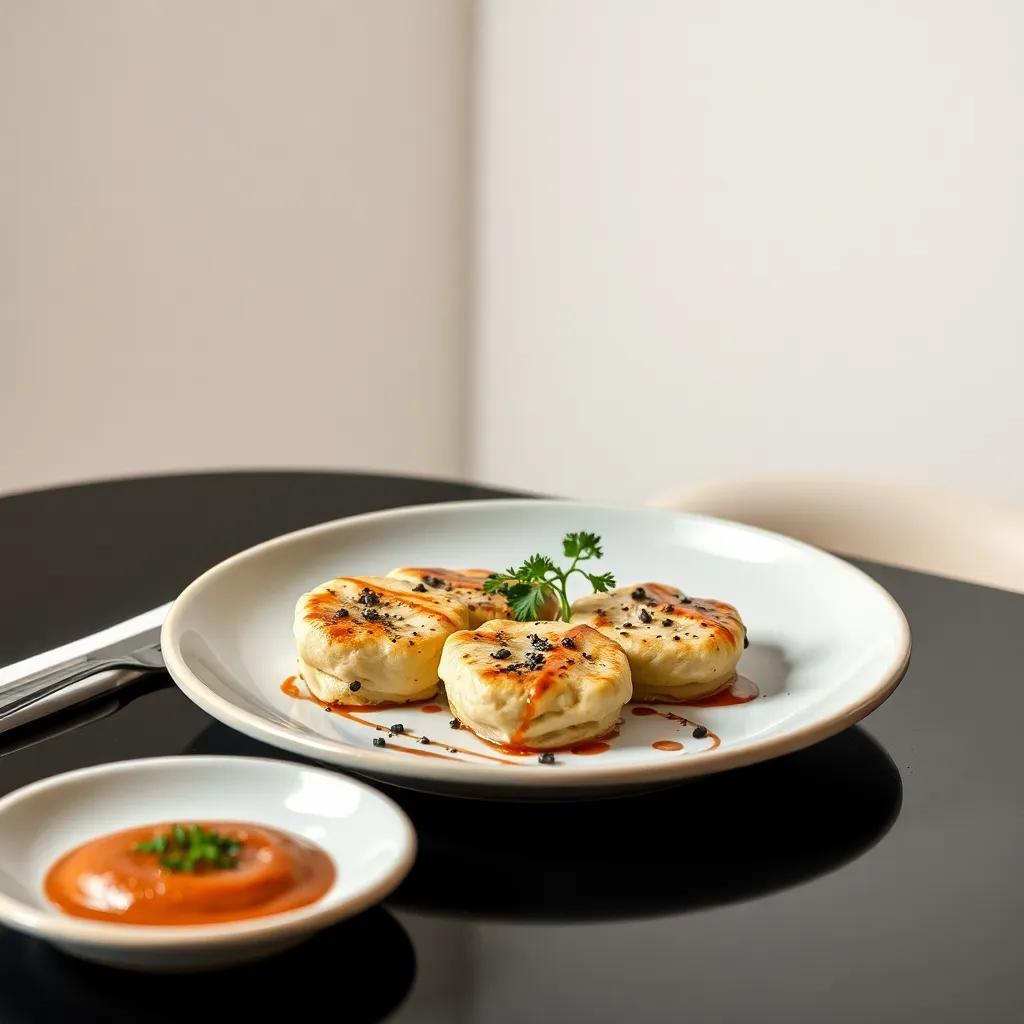
Behind the Recipe
Spanakopita is more than a delicious dish; it’s a culinary story steeped in the history and traditions of Greece. Originating from the mountainous villages and sun-soaked islands of the Mediterranean, this spinach pie embodies the resourcefulness and warmth of Greek home cooking. For generations, families gathered around humble tables, using what was fresh and abundant—wild greens, fragrant herbs, tangy cheeses, and of course, delicate phyllo sheets—to create a meal both nourishing and celebratory.
The roots of spanakopita trace back to the Ottomans’ influence on Greek cuisine, blending Middle Eastern pastry techniques with local ingredients. The practice of layering ultra-thin phyllo dough with savory fillings is a hallmark of this cross-cultural culinary heritage. Yet, what makes spanakopita truly Greek is the vibrant filling, where simple spinach and fresh herbs combine with feta and eggs to create a filling that’s at once earthy, creamy, and lively.
Many Greek families have their own versions passed down through generations—some adding leeks or nuts, others doubling down on herbs for extra fragrance. This recipe captures the essence of those traditions while making it accessible for modern cooks everywhere. It’s a dish that invites sharing, whether during holiday feasts or a quiet family lunch, bringing a taste of Greek hospitality to your table.
On a personal note, spanakopita often evokes memories of summer visits to Greece, sitting under olive trees while the warmth of the pie balanced the gentle Mediterranean breeze. Making it at home offers a small journey—a connection to culture, history, and the countless hands that have shaped this beloved pie over time. Each golden, crispy slice is a celebration not just of flavor but of a timeless tradition that continues to bring people together in kitchens and around tables worldwide.
FAQ
Can I make spanakopita ahead of time and freeze it?
What can I use if I don’t have fresh spinach?
Is it possible to make a vegan version of this classic pie?
Can I customize the filling with other greens or cheeses?
What’s the best way to reheat leftover spanakopita?
Can I make individual spanakopita servings instead of one big pie?
Bon Appétit!
Now that you’ve uncovered the secrets behind this classic spanakopita recipe, you’re just a few steps away from savoring a truly authentic Greek delight—crispy, savory, and bursting with fresh flavors. Whether you’re making it for a family dinner or a casual get-together, this easy-to-follow recipe promises to bring a touch of Mediterranean magic to your table.
We’d love to hear how your spanakopita turns out! Feel free to leave a comment, share your rating, or sprinkle in your own creative twist. After all, every great recipe grows richer with the stories and tweaks of those who make it their own. Happy baking!


